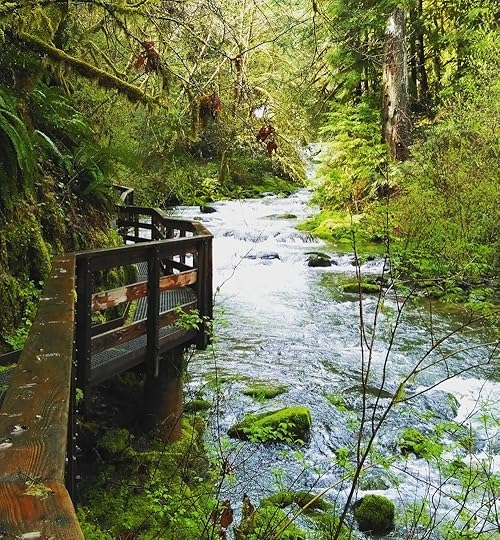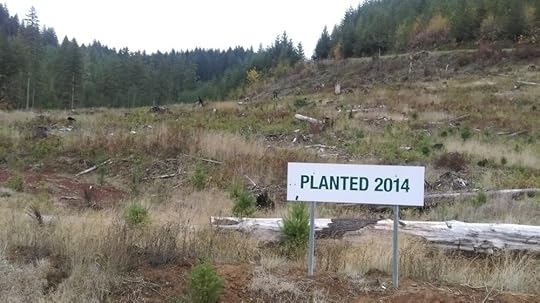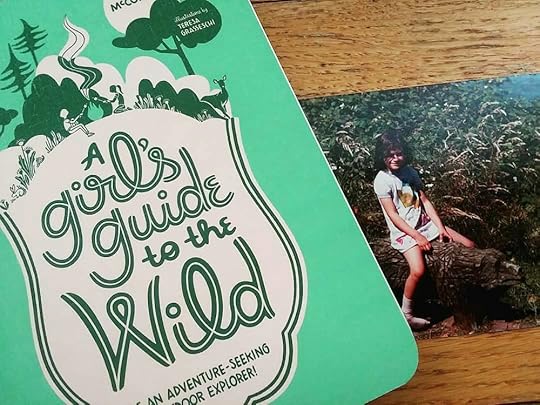Ruby McConnell's Blog, page 3
November 18, 2019
The Lost American Wilderness Part 4
The myth of female helplessness has been compounded and exasperated by a lack of wilderness education for girls and women. While learning to backpack, camp, and hunt are considered important rites of passage for our young American men, American girls are more likely to learn an art or craft, how to cook, or play a sport before they are taught how to pitch a tent or use a compass. American women are also not supposed to sweat, carry heavy things, be able to read maps, be seen without their makeup on, or know how to build a fire. Outdoor pursuits have a way of putting us in the delicate and untenable position of trying to balance our culturally requested veil of helplessness and delicacy with a very real and immediate need to be neither helpless nor delicate.
Ironically, we are in an age that has made access to the outdoors safer and easier than ever before. Parking areas are clearly labeled and typically have some kind of bathroom facility, trails are well maintained and clearly labeled, outdoor gear and clothing is lighter and generally more efficient and reliable, and more of us own cars than at any other time.
The time for action is now.

October 4, 2019
The Lost American Wilderness Part 3
This alienation is particularly profound in American women. While women in the United States have met or surpassed men in the workplace and higher education and rallied for the right to be included as equals in traditional male pursuits and vocations but there is still a gender gap in outdoor pursuits. The feminist movement of the late seventies and early eighties cast aside some unnecessary cultural norms; opening up professional opportunities and releasing us from the shackles of unwanted pregnancy and unhappy marriages. It also created two generations of women working both inside and outside the home, an ever-increasing number of them doing so as single parents. Where in the modern model of the American woman is there time for outdoor recreation?
The female alienation from the outdoors is codified in the persistent and systemic media portrayal of us as helpless, clueless, and burdensome. Even the strong female characters that I grew up with the 1980's, Carrie Fisher's Princess Leia and Kathleen Turner in Romancing the Stone for example, were ultimately portrayed in this manner. These characters were strong, smart women, allowed to be multidimensional, muscular, and mouthy, but they were still shown to be all but useless outside, dragged to safety by hand, by men, through half the movie. In fact, most movies and television shows, now as then, fail to show women in the outdoors whatsoever, and certainly not in competent, capable contexts.

September 21, 2019
The Lost American Wilderness Part 2
The erosion of the American wild, while driven by development and resource extraction, is primarily a function of our mindset. We have alienated ourselves from the wilderness by creating a social structure focused on passive entertainment, extreme hygiene, and the elimination of risk, one that prefers the sterile and controlled environment of the internet over the unknowns of the wild.
Our increasing addiction to and dependence on technology is also intimately linked to the disconnect between the American lifestyle and the outdoors. The immediacy of portable technology and the relocation of our social structure to online media have resulted in a culture of multitasking and the lack of the ability to either be present in the moment or be comfortable without constant stimulation. When we do go outside, we proudly post pictures, often while still outside, proof being in the outdoors without having to actually engage in it. Our mindset is reflected in our public polices and management agencies. On a recent trip to the John Day Fossil Beds National Monument in Oregon I arrived at a trail head only to find a sign saying that the fossils along the hike were replicas and that if I wanted to see the real fossils, I should continue down the road to the visitor’s center. It was then unsurprising when I passed no one on the trail and watched as car after car stopped, read the sign, and continued down the road to the comfort of air conditioning and interpretive videos.

August 27, 2019
The Lost American Wilderness Part 1
The abandonment of the American wild has happened in my lifetime. Trail heads at which I fought for a parking space fifteen years ago are now empty. I can walk for over an hour on a once-popular trail without passing a soul. Those I do see are either focused athletes or overweight, over-worked, and in over their heads. More often than not I marvel at how few people I encounter, that the great expanse of American wild lands are seemingly mine alone to play in. It is not an exaggeration to say that the wilderness in America, after more than a century spent finding it, has largely been lost. Gone are the days of summer-long family vacations, outdoor schools, and over-packed hiking trails. Also gone are the Hawaii chaff flower, the Passenger Pigeon, and the California Tapirs. Parents and children alike have taken to the couch, to twitter, to their phones, to doing absolutely nothing. And it is killing us.
The obesity and related health crisis, the rampant rise of heart disease, type II diabetes, and sundry other obesity and sedentary-related illnesses has been helped by the abandonment of the American wild, as has our increasing dependence on modern convenience. We no longer hunt, fish, or gather in our natural lands for food, fuel, building supplies or even Christmas trees. We do not cook or clean for ourselves, do our own gardening, or send or children outside to play, much less go out to play with them.
Our educational system, overrun, under-funded, and focused on standardized testing, is no longer teaching us to be inquisitive, no longer providing outdoor educational experiences, no longer teaching the life or earth sciences that inform our understanding and enhance our appreciation of the natural world. Conservation and educational organizations such as the Nature Conservancy and Greenpeace lost funding in the post-9-11 economic crisis and are still cutting programs and staff.
It is not just that we have abandoned the wild, we have allowed it to shrink, stripped it of its diversity, dammed its rivers, fouled the waters, clear cut the trees and strip-mined the land. We have traded parking lots, big box stores and miles and miles of subdivisions for our once resource-rich and expansive wild lands.
Originally written in 2013, but still relevant today

July 22, 2019
Learning to Look
Part of human nature, of how we experience ourselves in the world, is linked to the human sense of scale and our ability or inability to see the world around us. The crater at Mt. Tabor in Portland is an excellent example of this. Some people, in fact most people, will stand in the crater and see a parking lot, basketball courts, and a performance amphitheater all semi-enclosed by what looks like half a hill, a grassy knoll on one side and a great wall of rock on the other. Or you could see the exposed cross section of the inside of a small, possibly someday active volcano. You would notice the vertical vent, the piled layers of gravel-sized rocks ejected in fits and starts, each eruption contributing another layer to the cone like children at work on a sandcastle. You might then go on to notice other such round features across the city, isolated cones of land and realize that the entire area is dotted with small volcanoes. Learning to look, at the landscape, the plants and animals, the night sky, is an important part of understanding the world and our role in it. Urban green spaces and semi-developed natural areas almost always provide excellent interpretive resources. It is worth reading the signs, listening to the ranger, or picking up the brochure. Even better, read a guide to plants and animals or flip through picture books about geology and ecology. Take a class at the local community college or go listen to a lecture.
June 21, 2019
Women that Matter- Mary Anning
What kind of recognition do you get when you are a pioneering female paleontologist in the 17th Century? One that has been called the ‘greatest fossilist the world ever knew’? A monument? An international award in your name? A professorship? No. A tongue twister. That’s what you get.
Mary Anning was born to a lower-class family at the turn of the 16th century in Dorset, a port town on the southwest coast of England. One of the oldest in her family, Ms. Anning took up fossil hunting in the limestone cliffs along the coast with her father and became known locally for her daily walks, scouring the dangerous and unstable cliff bases along the shore for what would become the largest and most diversified collection of fossils in her time. After her father’s death, she turned her hobby into a profitable endeavor to help support her family, selling specimens to tourists, but more lucratively, to gentlemen scientists in the growing field of paleontology. These men flocked to her to obtain samples, detailed descriptions, and anatomical sketches of Jurassic-period fossils, many of which, such as the ichthyosaur which she discovered at the age of twelve, had never before been described. Though she was an early and important contributor to the theory of evolution, she was largely regarded a rock hound and field worker. Her research and findings were never published under her own name, or even a pen name- her male counterparts almost always chose to publish her work under their own names, ‘on her behalf.’ Moreover, the scientific community that relied so heavily upon her work attributed her intellect and abilities to a rumor that she had survived a lightning strike in infancy that had killed several other people. Today, she is credited with many of the earliest discoveries of dinosaurs and prehistoric reptiles species.
In the later years of her life, recognizing her contribution to the field and her ongoing lack of financial resources, the British Association for the Advancement of Science and the Geological Society of London granted her an annual annuity. The money for the annuity was charitably raised by the membership of both groups, the latter of which would not admit women until 1904, nearly twenty years after her death. At the time of her death she was so widely known and highly regarded that the Charles Dickens Journal, said of her, ‘the carpenter’s daughter has won a name for herself, and deserved to win it.’
While her work remains a cornerstone of modern geological and biological theory, her name has largely been lost from mainstream science curricula. The only mainstream reminder of Ms. Mary Anning bears no reference to her as either an outdoors woman or a scientist. She is the inspiration for the ubiquitous tongue twister- “She sells seashells by the sea shore.”

May 22, 2019
A Girl's Guide to the Wild
After the Woman’s Guide was released in 2016 it was immediately clear that there was also a gap on the shelf where an outdoor book for young women and girls should be. So I embarked on a three-year process of research and writing to create a volume that speaks to the broadest possible audience of girls in a way that encourages them to go outside, be adventurous, active, curious, and brave, and feel like they can do anything. This week, A Girl’s Guide to the Wild has hit the shelves and my inner girl is delighted. It’s a gift from her to girls everywhere, in the hopes that they follow their dreams.




